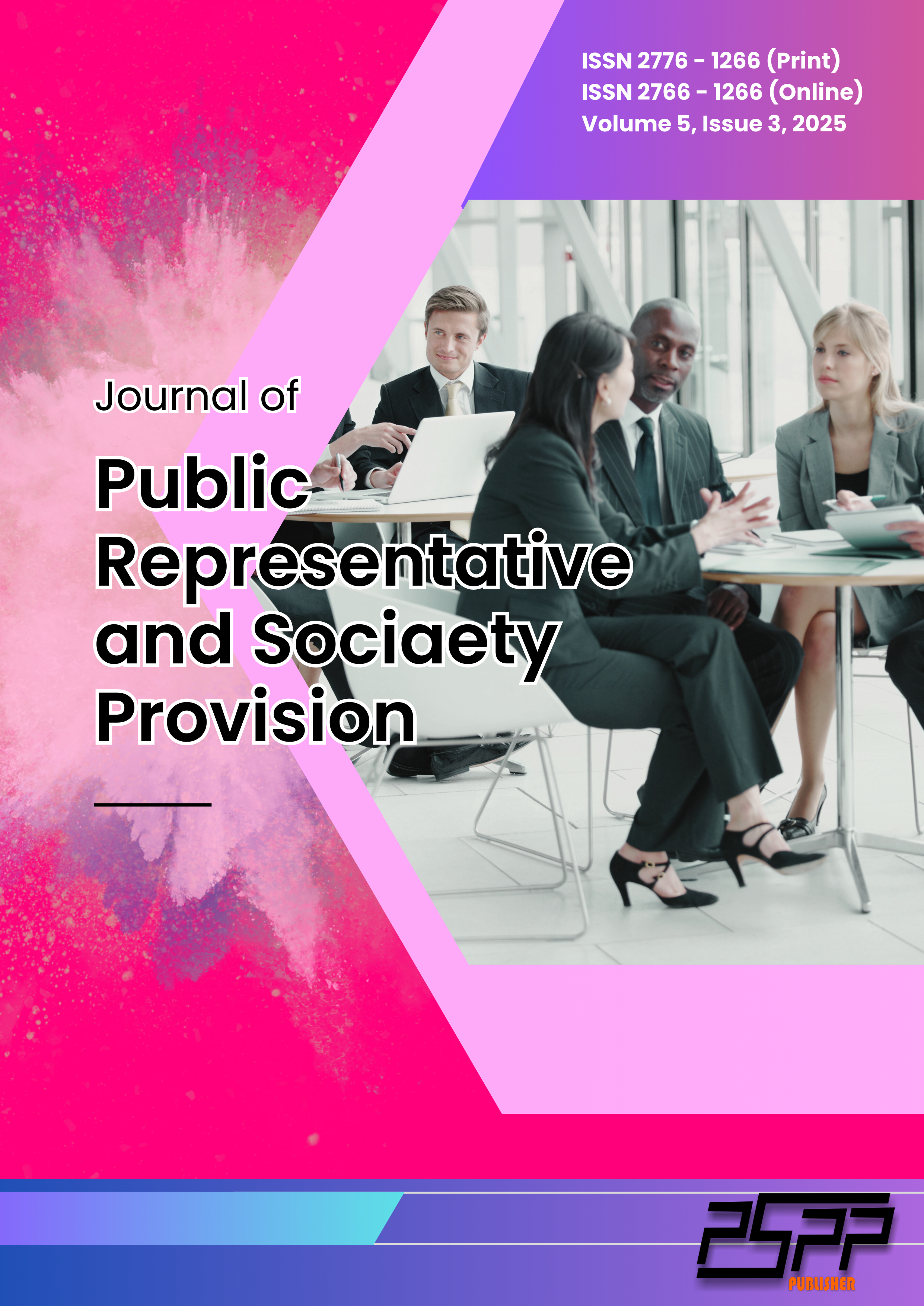Government Transparency Model in Procurement of Goods and Services in Luwu Regency
DOI:
https://doi.org/10.55885/jprsp.v5i3.803Keywords:
Government Transparency, Procurement of Goods and Services, Governance, Transparency Model, Luwu RegencyAbstract
Government procurement of goods and services is a sector that is highly vulnerable to irregularities and corruption practices, therefore, the implementation of transparency is a crucial aspect in realizing good governance. In Luwu Regency, although procurement has been implemented through the e-procurement system (LPSE), transparency still faces various weaknesses in public information access, process accountability, and stakeholder engagement. This study aims to analyze the government transparency model in procurement of goods and services in Luwu Regency and formulate a transparency strengthening model relevant to the regional context. The study used a qualitative descriptive approach with a case study design. Informants were determined using purposive sampling consisting of procurement officials, APIP, goods/services providers, and community elements. Data collection techniques included interviews, observations, document reviews, and literature studies on procurement regulations and transparency theory. Data analysis used the interactive model of Miles, Huberman, and Saldana. The results of the study indicate that the implementation of transparency in procurement is not optimal in four dimensions of Porumbescu (2022): organizational actors , technology , management interventions , and stakeholder environment . The main obstacles lie in limited open information, ineffective utilization of the LPSE system, weak oversight mechanisms, and a lack of public participation. This study recommends an integrative transparency model that focuses on strengthening information digitization, increasing procurement human resource capacity, collaboration-based oversight, and community involvement in procurement oversight to support public accountability in Luwu Regency.References
Badan Pemeriksa Keuangan Republik Indonesia. (2023). Ikhtisar hasil pemeriksaan semester II tahun 2023. Jakarta: BPK RI.
Ball, C. (2009). What is transparency? Public Integrity, 11(4), 293–308. https://doi.org/10.2753/PIN1099-9922110400
Bovens, M. (2010). Two Concepts of Accountability: Accountability as a Virtue and as a Mechanism. European Law Journal, 13(4), 447–468.
Fox, J. (2007). The uncertain relationship between transparency and accountability. Development in Practice, 17(4–5), 663–671. https://doi.org/10.1080/09614520701469955
Hood, C. (2006). Transparency in historical perspective. In C. Hood & D. Heald (Eds.), Transparency: The key to better governance? (pp. 3–23). Oxford University Press.
Inspektorat Kabupaten Luwu. (2023). Laporan hasil pengawasan penyelenggaraan pemerintah daerah Kabupaten Luwu tahun 2023. Belopa: Pemerintah Kabupaten Luwu.
Koppell, J. G. S. (2005). Pathologies of Accountability: ICANN and the Challenge of Multiple Accountabilities Disorder. Public Administration Review, 65(1), 94–108.
Layanan Pengadaan Secara Elektronik (LPSE) Kabupaten Luwu. (2023). Rekapitulasi paket pengadaan barang/jasa tahun 2023. Belopa: LPSE Luwu.
LKPP (2022). Evaluasi Pelaksanaan Pengadaan Barang/Jasa Pemerintah Daerah Tahun 2022. Jakarta: Lembaga Kebijakan Pengadaan Barang/Jasa Pemerintah.
LKPP (2023). Modul Penguatan Integritas Pengadaan Barang/Jasa Pemerintah. Jakarta: Lembaga Kebijakan Pengadaan Barang/Jasa Pemerintah.
Meijer, A. (2013). Understanding the Complex Dynamics of Transparency. Public Administration Review, 73(3), 429–439.
Porumbescu, G., Cucciniello, M., & Grimmelikhuijsen, S. (2022). Government Transparency: State of the Art and New Perspectives. Public Administration Review, 82(3), 1–14.
Porumbescu, G. A. (2015). Linking transparency to trust in government and voice. The American Review of Public Administration, 45(5), 520–536. https://doi.org/10.1177/0275074014564908
Porumbescu, G. A. (2017). Comparing the effects of e-government and social media use on trust in government: Evidence from Seoul, South Korea. Public Management Review, 19(8), 1185–1204. https://doi.org/10.1080/14719037.2016.1209236
Porumbescu, G. A. (2020). Transparency research: Where do we go from here? Public Administration Review, 80(1), 18–28. https://doi.org/10.1111/puar.13129
Rasul, S. (2019). E-Procurement, Good Governance, and Public Sector Accountability. Public Procurement Review, 4(2), 44–55.
Republik Indonesia. Peraturan Presiden (Perpres) Nomor 16 Tahun 2018 tentang Pengadaan Barang/Jasa Pemerintah.
Republik Indonesia. Peraturan Presiden (Perpres) Nomor 12 Tahun 2021 tentang Perubahan atas Perpres 16/2018.
Republik Indonesia. Peraturan Pemerintah (PP) Nomor 94 Tahun 2021 tentang Disiplin Pegawai Negeri Sipil.
Transparency International. (2022). Corruption perceptions index 2022. Transparency International Secretariat. https://www.transparency.org/en/cpi/2022
Wicaksono, A., & Aminah, S. (2021). Determinants of Transparency in Public Procurement in Indonesian Local Government. Jurnal Administrasi Publik, 15(2), 201–215.
Downloads
Published
How to Cite
Issue
Section
License
Copyright (c) 2025 Journal of Public Representative and Society Provision

This work is licensed under a Creative Commons Attribution-ShareAlike 4.0 International License.


















